GUN REVIEW: DESERT TECH SRS A2 RIFLE
30th Aug 2019
Source Credit to guns.com | by Jeff Wood
Click here to view the original article.
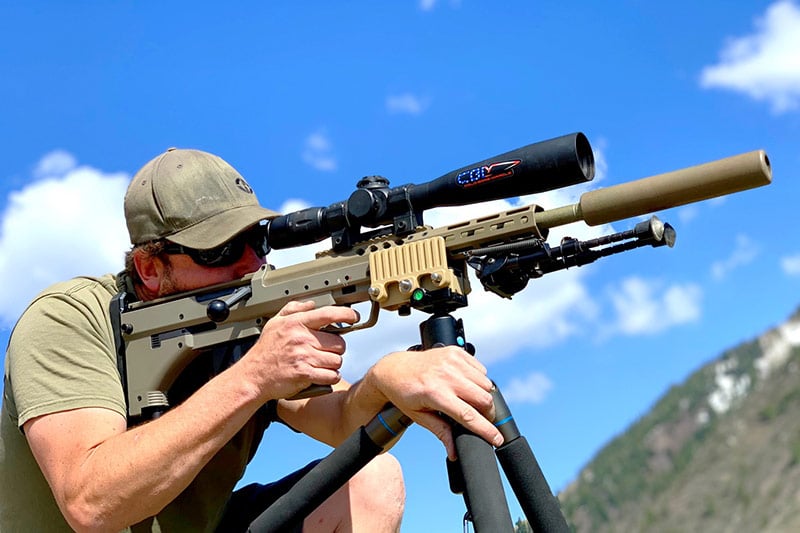
The Desert Tech SRS A2 builds on the bullpup platform. (Photo: Jeff Wood)
In 2007, Desert Tech introduced a precision bullpup rifle to the firearms market known as the Stealth Recon Scout. Since its inception, it’s seen a few revisions with the fourth generation SRS recently introduced as the A2 Model.
THE DESERT TECH SRS A2
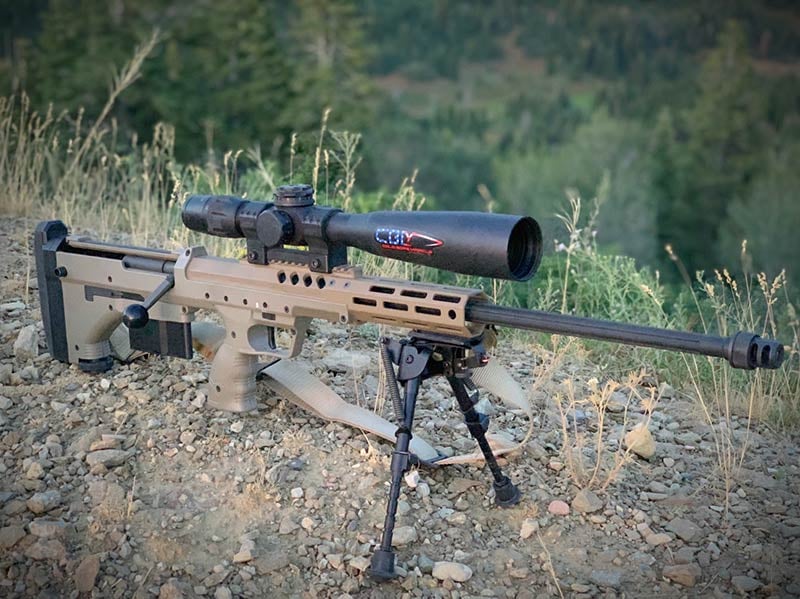
The Desert Tech SRS A2 elevates the SRS A1 design with elevated features. (Photo: Jeff Wood)
For those not familiar with the SRS family, the bullpup boasts a detachable box magazine-fed, bolt-action design with the added advantage of serving as a multi-caliber rifle. The bullpup construction means that the rifle’s action is behind the trigger, and against the shoulder. This design has been tried many times over the years, in order to shorten the overall length and portability of the rifle, and the SRS incorporates these design advantages in addition to adding quality and a stellar record of performance – characteristics often sought by law enforcement, military and precision shooters. Perhaps the greatest advantage of the SRS platform, the icing on the proverbial cake, is its multi-caliber capability.
The SRS has a large following with a multitude of aftermarket barrel manufacturers allowing users to customize these factory-built rifles in whatever caliber they desire. Ranging from .223 Remington all the way up to .375XC, consumers can find a variety of caliber options to swap into the SRS 2, including well-known bestsellers such as 6.5 Creedmoor, .308 Winchester, and .338 Lapua Magnum.
The SRS A2 follows the long celebrated A1 model from which it evolved. The SRS features an all-aluminum receiver sandwiched between two polymer skins comprising the pistol-grip and magazine well. The receiver is split down the middle featuring four clamping screws down the side. These features culminate to bring forth one of the SRS’ strongest assets – its unique barrel clamping system.

The SRS A2 removes weight by shaving materials. (Photo: Jeff Wood)
All SRS barrels have a shank at the breach that fits snuggly into the receiver and is then secured via those aforementioned clamping screws. Barrels are slid into the chassis from the front, then seated against a steel feed ramp that doubles as an index point. The unique barrel clamping system also allows the SRS to return to zero. This guarantees that every time you install a barrel, the gun will return to the same point of impact every time. Bolts are slid into the breach by removing the recoil pad from the back.
In addition to the new A2 rifle chassis, Desert Tech will be releasing a few new calibers specifically marketed towards big game hunters. These newer barrels are chambered in popular cartridges such as .300 RUM, .300 Winchester Magnum, and 7mm Remington Magnum with more to come.
WHAT’S NEW WITH THE A2?
The evolution of this precision bullpup introduces several advantages to the system. One of the first notable differences of the new rifle is its M-LOK handguard. M-LOK, a more popular mounting system, replaced the Picatinny rail design from prior generations. The new handguard boasts the ability to allow users to replace it, easily swapping between standard lengths and shorter lengths depending on preference. Desert Tech sells separate handguards as a kit for end-users to install, so they can enjoy the benefits of whatever configuration makes them happiest.
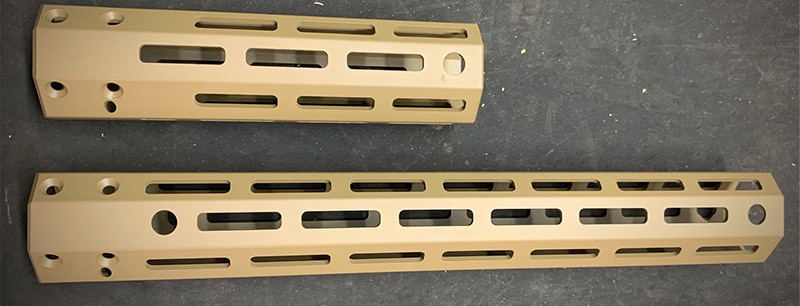
The SRS A2 features new M-LOK handguards. (Photo: Jeff Wood)
The rifle sports a lighter weight with the A2 revision weighing 2.1-pounds less than its predecessor. Desert Tech achieves this slimmer version through shaving material where possible. This is apparent in Desert Tech’s decision to make the built-in, retractable monopod seen on its predecessor, the SRS A1, an optional equipment upgrade versus standard equipment. Using a lighter build, the SRS A2 opens itself up to more gun owners, specifically those who like to hunt, providing a more appealing option to haul into the woods.
The trigger also received an upgrade, equipped with a new design the company calls a “field match” trigger. This new design is adjustable from 1.5 to 7 pounds. Previous generations of SRS rifles used fully adjustable triggers that were serviceable in the field with a simple Allen wrench. This new trigger, however, requires disassembly of the chassis in order to adjust. While an infrequent necessity, it is still an unwelcome one.
Though the A2 elevates its design with certain upgrades, there are a few items that remain the same. Namely the barrel clamping procedure remains the same between the A1 and A2 models as does the adjustable comb height.
HANDS-ON WITH THE SRS A2
Already quite familiar with the SRS platform, I found the A2 model to be an easy transition. Everything about it was recognizable and I was able to use several older conversion kits with great success. The A2’s weight saving measures definitely came in handy and I recognized immediately the advantage this would serve to hiking hunters.
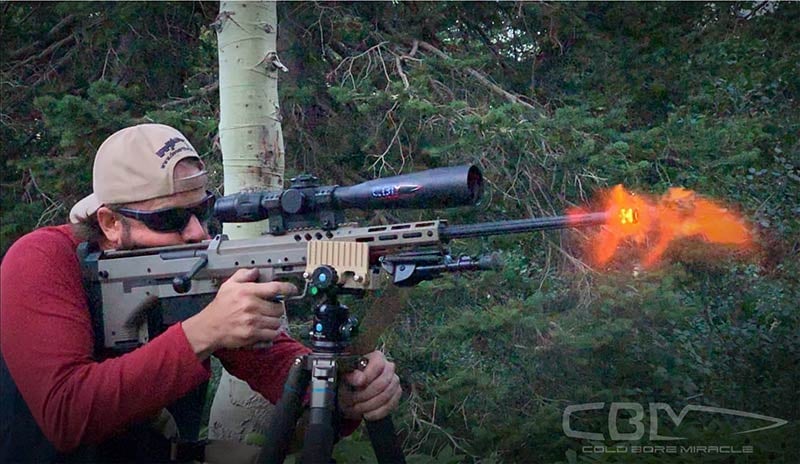
The SRS A2 offers an accurate design. (Photo: Jeff Wood)
The SRS itself is quite accurate, in my experience, but Desert Tech claims the A2 features takes the accuracy even further, so I was eager to take it out to see for myself. I tried the A2 out with several different barrels at the range, among them the 6.5 Creedmoor, .308 Winchester, .300 Remington Ultra Magnum and .300 Winchester Magnum.
The new hunting calibers featured the lighter contour, resulting in a little more aggressive felt recoil. However, the recoil was manageable with the muzzle brake. Accuracy was on par with my expectations of the SRS platform, resulting in typical groups at half MOA. Ammunition types varied wildly, however – some ammo did not shoot MOA at all, while others easily shot sub-half MOA. Whether the lighter contour barrels have something to do with, I can’t readily say.
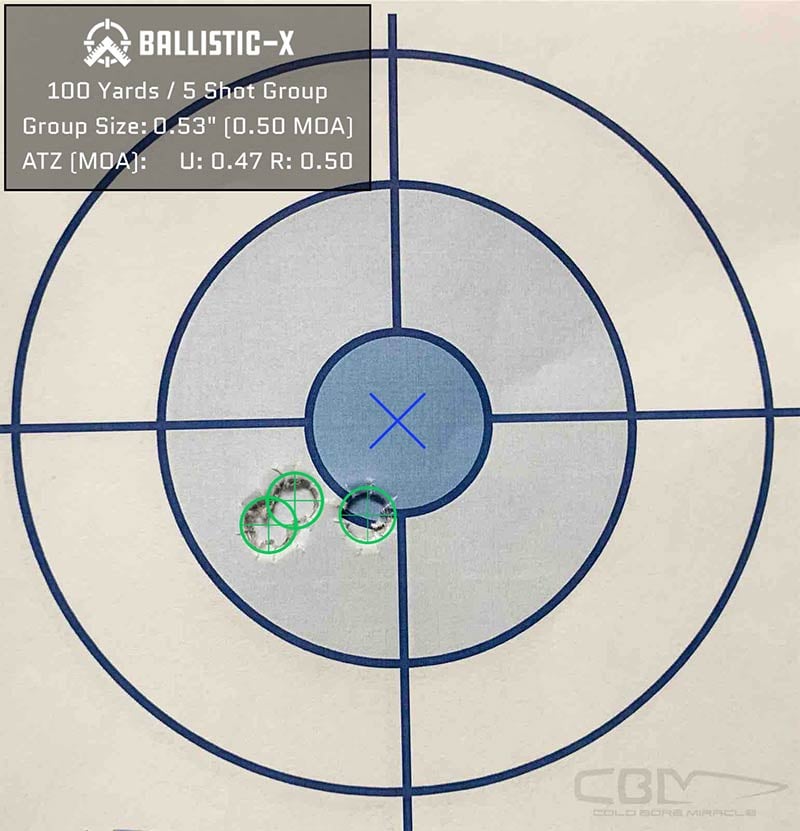
Shot group on the SRS A2. (Photo: Jeff Wood)
The rifle seemed to shoot better with a sound suppressor installed. The Desert Tech suppressor mounted directly to the muzzle brake and provided hearing-safe shooting with enhanced accuracy. Even better, the SRS A2 retained its compact size even with a suppressor attached, measuring shorter than comparable rifles.
Whether shooting inside a 100-yard underground tunnel or shooting 1,200-yards across a breezy mountain ridge, the SRS A2 ultimately tackled targets with ease. The SRS A2 is a pleasant breath of fresh air and it appears Desert Tech has listened to its consumers and delivered a better bullpup. Though my A1 won’t be going anywhere soon, it definitely could use an A2 to go with it.

